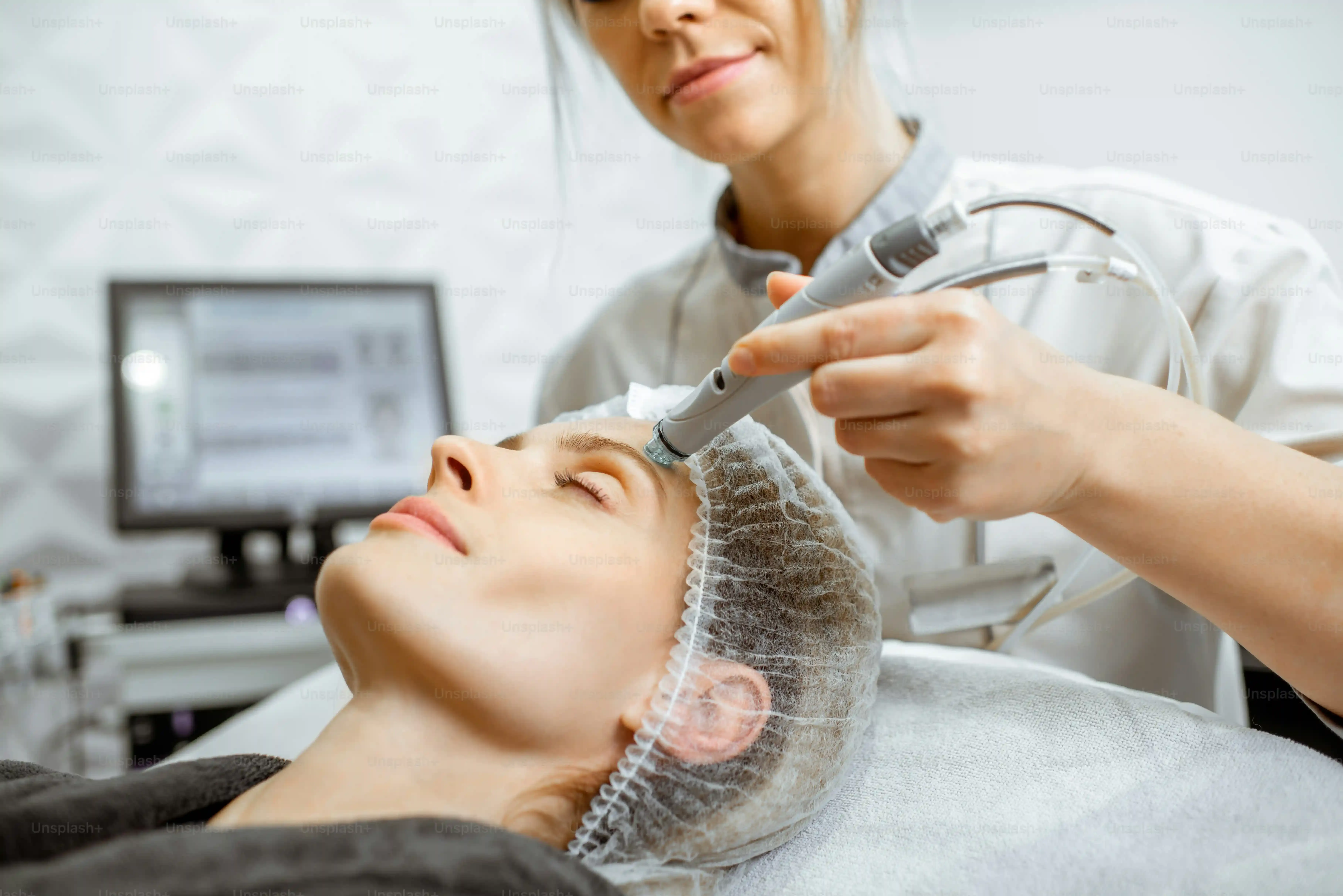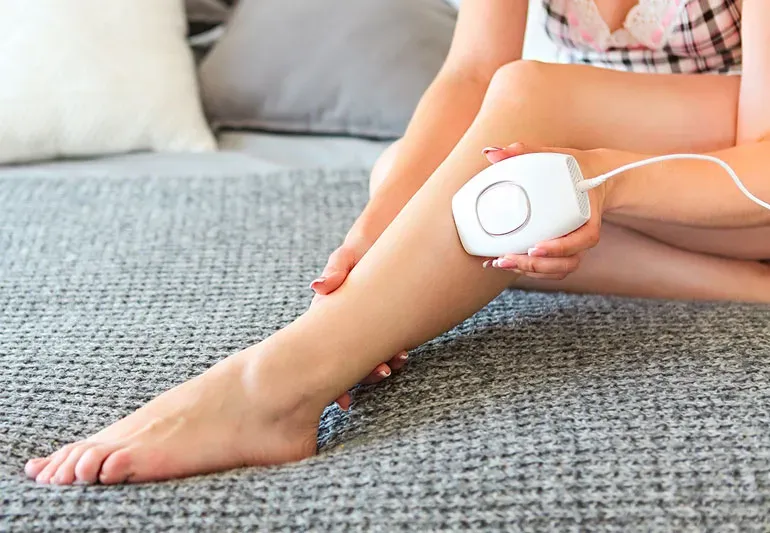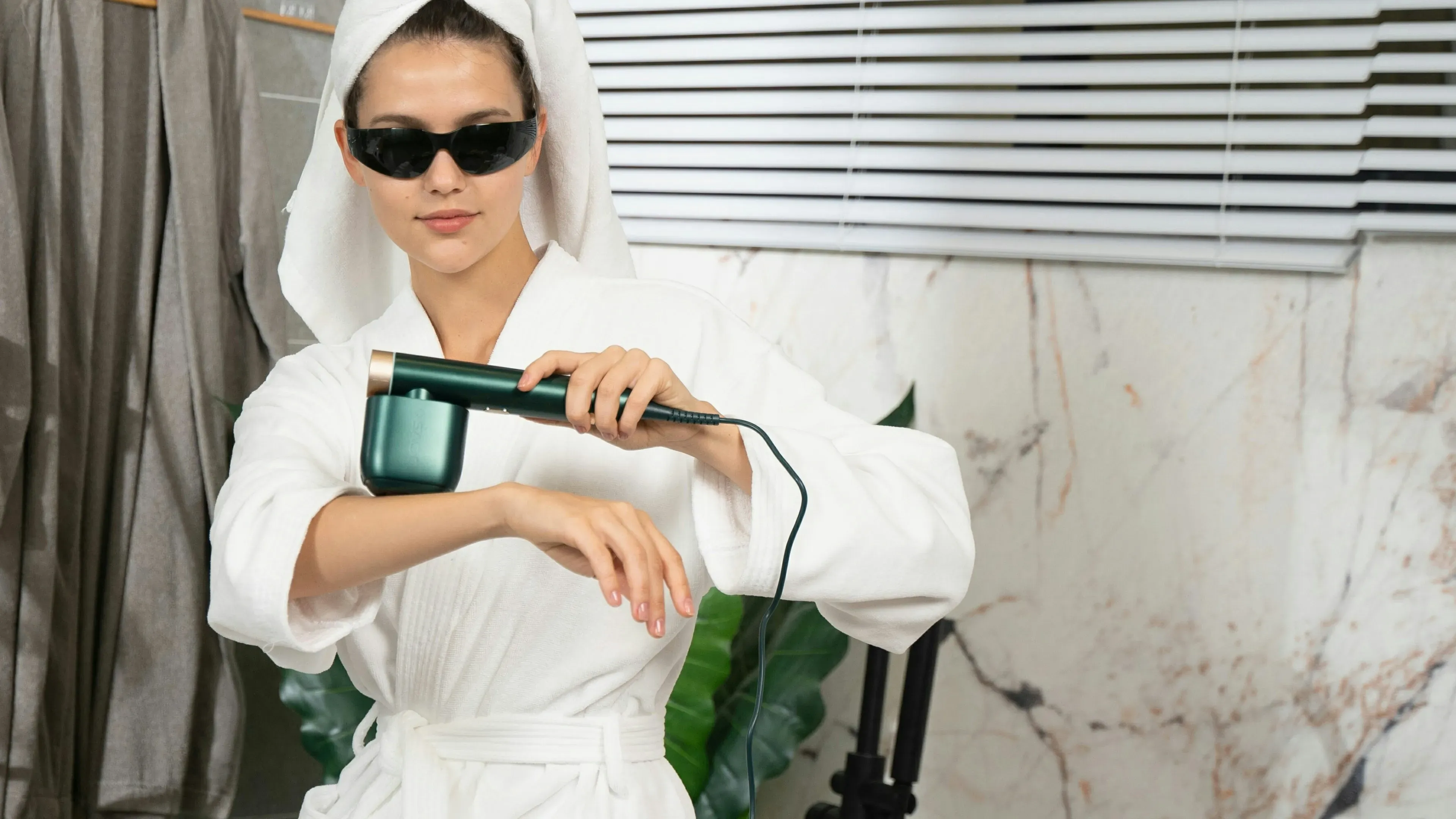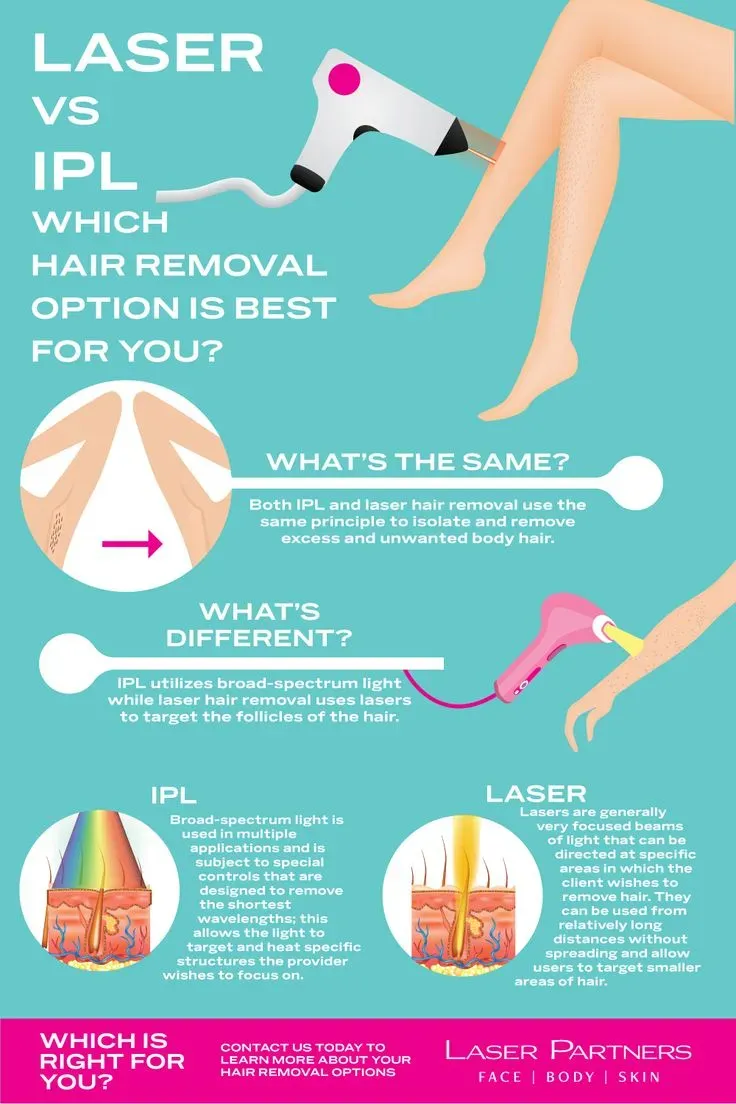Table of Contents
Tired of the endless cycle of shaving, waxing, and plucking? You're not alone. The dream of smooth, hair-free skin without constant effort has led many to explore options beyond the razor. One path that's become increasingly popular is tackling hair removal at home. Devices promising permanent or long-term reduction are readily available, beckoning from online stores and beauty aisles. But before you click 'add to cart' or swipe your credit card, it's crucial to pump the brakes and look closely. What's the real deal with these gadgets? This article dives deep into the world of at home laser hair removal pros and cons. We'll cut through the marketing hype and get down to the practical realities. Are these devices truly effective? Are they safe to use without professional supervision? We'll break down how they work, weigh the benefits against the drawbacks, discuss who is the best candidate, and compare the at-home experience to getting treatments in a clinic. Get ready to get informed before you decide if bringing the laser salon into your bathroom is the right move for you.
Understanding At Home Laser Hair Removal

Understanding At Home Laser Hair Removal
What Exactly Are These Devices?
So, you've seen the ads. Sleek gadgets promising a life free from stubble and ingrown hairs, all from the comfort of your own bathroom. These are the devices for at home laser hair removal pros and cons often talk about. They're designed to mimic the technology used in professional clinics but in a scaled-down, user-friendly package. Think of them as the home espresso machine version of a professional barista's setup. They aim to deliver light energy to your hair follicles, intending to damage them enough to slow down or stop future hair growth. The core idea is convenience and privacy, allowing you to zap away unwanted hair on your schedule.
How They Work: Light, Heat, and Hair
The science behind at-home hair removal devices boils down to light and heat. Most devices don't actually use a true laser, despite the common name. They use Intense Pulsed Light (IPL). A true laser uses a single, focused wavelength of light, while IPL uses a broad spectrum of light wavelengths. Both methods target the pigment (melanin) in the hair follicle. The dark melanin absorbs the light energy, which converts to heat. This heat damages the follicle, impairing its ability to produce hair. It's a targeted attack on the root, aiming to disable it over time. This is why these devices are most effective on dark hair against light skin – there's more pigment for the light to target.
True laser devices for home use are less common and often more expensive. They operate on the same principle but with that specific wavelength of light, which can potentially be more precise. Regardless of whether it's laser or IPL, the goal is the same: heat the follicle just enough to damage it without frying your skin. It's a delicate balance.
- At-home devices use light energy.
- Light targets pigment (melanin) in hair.
- Absorbed light turns to heat.
- Heat damages the hair follicle.
- Damage slows or stops hair growth.
- Multiple sessions are always required.
Who Are They Designed For?
This is where things get specific, and frankly, a bit limited for some people. Because these devices rely on the contrast between hair pigment and skin pigment, they work best for individuals with fair to medium skin tones and dark hair. If you have very light blonde, red, gray, or white hair, there isn't enough melanin in the hair to absorb the light effectively, so the treatment won't do much. Similarly, if you have a darker skin tone, your skin contains more melanin. The device's light can get absorbed by the skin instead of just the hair, leading to a higher risk of burns, discoloration, or scarring. Many devices have built-in sensors that prevent them from firing on skin tones deemed unsafe, which is a necessary safety feature, but it also means these aren't a universal solution for hair removal.
The Real At Home Laser Hair Removal Pros and Cons

The Real At Home Laser Hair Removal Pros and Cons
Weighing the Good Against the Not-So-Good
Alright, let's get down to brass tacks and talk about The Real At Home Laser Hair Removal Pros and Cons. On one hand, the allure is undeniable: zapping away hair while watching Netflix, no appointment needed, no awkward salon small talk. That convenience is huge for many people. And yes, the initial cost of a device is often significantly less than a full course of professional treatments. You buy the gadget once, and theoretically, you have it for ongoing touch-ups. It feels like freedom from the monthly waxing bill or the daily shave. However, flip that coin over, and you find the less glamorous side. These devices use much lower energy levels than professional machines. This means treatments are less powerful, results take longer to appear, and you'll need many more sessions – often spread over months, if not years – to see a noticeable reduction, and even then, it might not be complete permanence. There's also the learning curve; using it correctly on yourself can be tricky, especially on hard-to-reach areas, and improper use can lead to irritation or missed spots. It's not quite as simple as waving a magic wand.
Effectiveness and Safety: Sorting Fact from Fiction

Effectiveness and Safety: Sorting Fact from Fiction
Are They Really Effective and Safe?
The big question everyone asks is, "Do these things actually work?" And perhaps more importantly, "Are they safe to use on myself?" Let's be clear: at-home devices can reduce hair growth, but calling it "permanent" is often a stretch. Think of it more like a significant reduction and slowing down. You won't likely achieve the completely smooth, hair-free result you might see after a full course of professional treatments. Why? Because the energy output is lower by design. This lower power means multiple sessions are needed, and even then, you'll probably require maintenance treatments down the line as some follicles recover. Effectiveness also varies wildly depending on your specific hair and skin type combination, the device quality, and how diligently and correctly you use it. Safety is a primary concern, and while manufacturers build in features like skin tone sensors, improper use – like treating the same area too many times, using it on unsuitable skin tones, or not following instructions – can lead to burns, hyperpigmentation (dark spots), hypopigmentation (light spots), or even scarring. It’s not a toy; it's a device that emits light energy designed to damage biological tissue.
- Effectiveness is typically hair reduction, not full permanence.
- Lower power means more treatments needed than professional sessions.
- Results vary based on hair/skin type and device quality.
- Maintenance treatments are often necessary.
- Safety depends heavily on correct usage and suitability.
- Risks include burns, discoloration, and scarring from improper use.
Comparing At Home Devices to Professional Treatments

Comparing At Home Devices to Professional Treatments
Salon vs. Sofa: Where Do You Get More Bang for Your Buck?
so you've got the shiny gadget at home, ready to go. How does that stack up against walking into a clinic, sitting in a treatment chair, and having a professional do the zapping? It's like comparing a home treadmill to running on a track with a coach. Both involve movement, but the intensity, guidance, and potential results are different. Professional laser hair removal uses machines with significantly higher energy output. This means they can target the follicles more effectively and often require fewer sessions to achieve a greater level of hair reduction. A typical course might be 6-8 sessions spaced a month or two apart. With an at-home device, you're looking at potentially weekly treatments for months, maybe even a year, to see comparable (though often not identical) results. The power difference is the main reason why clinics can treat a wider range of skin tones safely (though still not everyone) and why their results tend to be more thorough and longer-lasting. You're paying for that increased power, the clinician's expertise in using it correctly, and the ability of the device to handle more complex hair and skin types.
The initial sticker price for an at-home device looks appealing, no doubt. A few hundred dollars versus potentially thousands for a full course at a clinic. It feels like a massive saving. But consider the total picture. The results at home might be less dramatic, require constant touch-ups, and you might eventually get frustrated and end up going to a clinic anyway. Plus, if you mess up at home and cause a burn or discoloration, fixing that isn't free. Clinics also offer different types of lasers suited for different needs, something a single at-home device can't replicate. For instance, clinics might use Alexandrite, Diode, or Nd:YAG lasers, each with different wavelengths suited for various hair and skin types. Your little handheld IPL unit doesn't offer that kind of tailored approach. If you're curious about professional options and finding the right fit for you, places like hairawaybylaser.com offer a look into the world of clinical treatments and what they can achieve.
Feature | At-Home Devices | Professional Treatments |
|---|---|---|
Energy Level | Lower (safer for home use) | Higher (more effective) |
Effectiveness | Hair reduction/slowing | Significant hair reduction/longer-term results |
Sessions Needed | Many (weekly/bi-weekly for months) | Fewer (typically 6-8 sessions) |
Cost | Lower initial cost | Higher overall cost |
Convenience | High (do it yourself, anytime) | Lower (scheduled appointments) |
Safety | Depends heavily on user adherence & suitability | Generally higher due to trained professional & controlled environment |
Skin/Hair Suitability | Limited (light skin, dark hair) | Broader range (depending on clinic tech), but still not universal |
Supervision | None | Trained technician/clinician |
Making Your Decision on At Home Laser Hair Removal
So, you've weighed the at home laser hair removal pros and cons. It's clear these devices offer convenience and a lower upfront cost compared to clinic visits. Zapping hair in your pajamas certainly beats scheduling appointments and travel time. However, they aren't the miracle quick fix many advertisements suggest. The energy levels are lower, meaning more sessions are needed, results can be less dramatic, and they simply don't work for everyone, especially those with darker skin tones or lighter hair. Think of it as a dimmer switch compared to the clinic's spotlight. Before you commit, manage your expectations. Understand the limitations, read reviews carefully (paying attention to complaints, not just praise), and consider if the time and potential frustration outweigh the convenience. For some, it's a viable option for touch-ups or smaller areas, but for significant, permanent reduction across larger zones, the professional route often delivers more reliably, albeit at a higher price. Ultimately, the choice boils down to balancing convenience and cost against expected results and suitability for your specific needs.
